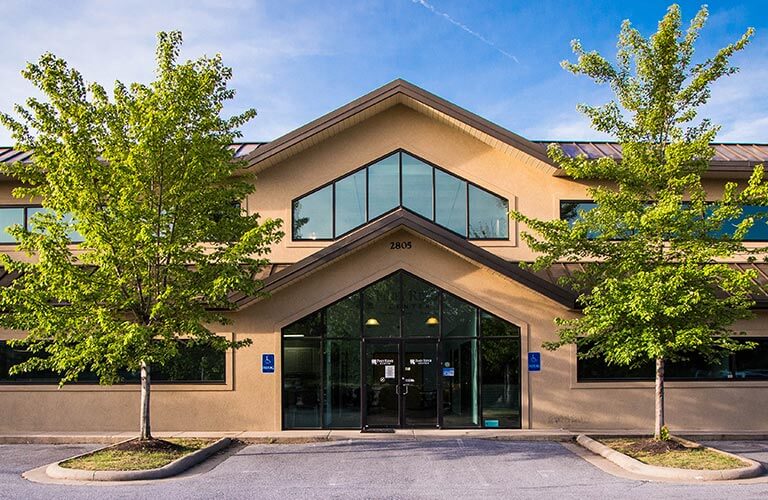No one experiences PTSD the same way as someone else. Understanding the signs, symptoms and side effects of PTSD is a key component toward starting the recovery journey.
Understanding PTSD
Learn about PTSD
Posttraumatic stress disorder (PTSD) occurs after a person has been exposed to an event that leaves behind chronic, unwanted feelings of distress that lead to significant impairment or dysfunction in the person’s ability to function appropriately on a daily basis. Despite the fact that many people identify kids as being resilient, or able to recover quickly from difficulties, there are many children and adolescents who suffer from posttraumatic stress disorder. When children have experienced a single traumatic event, a series of connected traumatic events, or chronic stressful situations, they are at risk of suffering from the symptoms of PTSD.
Statistics
PTSD statistics
It is difficult for professionals in the field to accumulate accurate statistics in regards to how many children and adolescents suffer from PTSD because there are many children who suffer from ongoing traumas in the privacy of their own homes without having the voice to report their pain and suffering. In cases of abuse and neglect, the statistics that have been compiled are typically obtained through Child and Family Protective Services. According to the U.S. Department of Veterans Affairs’ National Center for PTSD, child protection services gets around three million reports of child abuse and neglect each year, which equates to about 5.5 million children. Of those statistics, the Center for PTSD broke the cases down into percentages based on the type of reports that are received. Approximately 65% of the cases are of neglect, 18% are of physical abuse, 10% are of sexual abuse, and 7% are of psychological abuse. The ranges in which these cases result in children suffering from PTSD are quite broad, with studies showing that between 3-15% of girls and 1-6% of boys develop PTSD.
Causes and Risk Factors
Causes and risk factors for PTSD
The causes and risk factors of posttraumatic stress disorder tend to be characterized somewhat differently than other mental disorders. The National Institute of Mental Health (NIMH) breaks down the disorder into risk factors, which are identified as making people more likely to develop the disorder, and resiliency factors, which NIMH defines as being aspects that help towards reducing the risk that someone will develop the disorder. The risk factors that are prominent in adults are prominent in children and adolescents suffering from PTSD as well. Three factors that have been identified as primary causes that raise the chances that children will develop PTSD include how severe the trauma is, how the parents (if present in the child’s life) react to the trauma, and how close or far away the child is from the trauma. The following are other risk factors that may exist: Risk Factors:
- Family history of mental illness
- Suffering from physical, sexual, or emotional abuse
- Experiencing the death of someone who they greatly cared about or relied on
- Witnessing people being hurt or killed
- Repeatedly moving from one foster care home to another
- Going through the process of adoption
- Having to go through extreme medical interventions (e.g. major surgeries, chemotherapy, etc.)
- Living through natural disasters, such as tornadoes, floods, and earthquakes that have devastating effects on the world directly around the child
Unlike risk factors, the resiliency factors in children facing PTSD symptoms are different from those outlined for adults in that kids will most likely have to rely on adults in order to find the tools for the development of much of that resiliency. Resiliency Factors:
- Having the support of family and friends
- Having coping mechanisms that can be successfully applied in the aftermath of a traumatic event
- Having access to a support group
- Having access to therapeutic interventions
Signs and Symptoms
Signs and symptoms of PTSD
The signs and symptoms of posttraumatic stress disorder will vary based on the type of trauma that is experienced, each child’s individual temperament or personality characteristics, and the ability of those in the child’s life to help him or her cope with the symptoms that are experienced as a result of the trauma. The sense in which children are provided with feelings of safety and protection in their environment following the trauma will also play a role in the types of, and the severity of, the symptoms that will occur. The following are examples of some behavioral, physical, cognitive, and psychosocial symptoms that children or adolescents may exhibit: Behavioral symptoms:
- Blatant avoidance of people, places, activities, or events
- Bedwetting
- Being unable or unwilling to talk
- Irritable behavior
- Exaggerated startle response
- Self-harm
- Aggression
- Acting out sexually
Physical symptoms:
- Sleep disturbances
- Flashbacks
- Sleepwalking
- Intense physical reactions when reminded of the trauma (e.g. nausea, muscle tension, profuse sweating, pounding heart, rapid breathing, etc.)
Cognitive symptoms:
- Difficulty concentrating
- Difficulty remembering
- Depersonalization
- Derealization
- Night terrors
Psychosocial symptoms:
- Loss of interest in things that one used to enjoy
- Increased frequency of negative emotions
- Diminished positive emotions
- Low self-worth
- Feeling alone
- Extreme feelings of fear, worry, anger, and sadness
- Lack of trust in others
- Increased emotional arousal
- Feeling detached or emotionally numb
Effects
Effects of PTSD
Without treatment, the symptoms of posttraumatic stress disorder can have detrimental effects on the lives of children and adolescents. These effects will also most likely follow them into adulthood. Some examples of these negative effects can include:
- Inability to develop or maintain positive, healthy interpersonal relationships
- Inability to trust others
- Chronic feelings of fear, worry, and anxiety
- Low self-esteem
- Social isolation
- Self-harm
- Suicidal thoughts and behaviors
Co-Occurring Disorders
PTSD and co-occurring disorders
Posttraumatic stress disorder can occur alongside a number of different mental disorders, or it can lead to the onset of symptoms of other disorders. It has been said that people suffering from PTSD are 80% more likely to meet the diagnostic criteria for another mental disorder than those who do not suffer from PTSD. The most common disorders that co-occur with posttraumatic stress disorder include:
- Depressive disorders
- Anxiety disorders
- Bipolar disorder
- Substance abuse disorders



